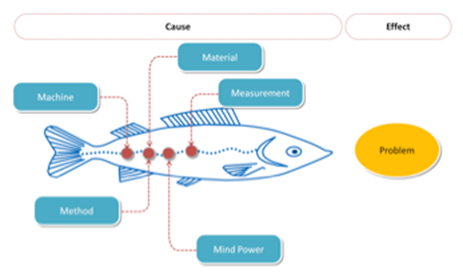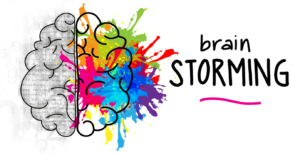
3 Effective Techniques for Root Cause Analysis
Root Cause Analysis is a method of identifying the underlying cause of a problem or fault. It is a systematic process that involves gathering information, analyzing data and identifying the root cause of the problem. The goal of Root Cause Analysis is to solve the problem and prevent it from happening again in the future.
The process of Root Cause Analysis begins with identifying and defining the problem. This includes gathering information such as symptoms, causes and effects of the problem. This information is then analyzed to determine the root cause of the problem. The analysis may involve using tools such as cause and effect diagrams, flowcharts, and statistical analysis.
In the past I have performed Root Cause Analysis in a number of occasions, and I found the following 3 techniques both effective and easy to use.
Technique 1: “5-Whys” Analysis

The “5-Whys” Analysis is a simple yet effective problem-solving technique that helps users quickly identify the root cause of a problem. This technique was made popular in the 1970s by the Toyota Production System, which aimed to improve the efficiency and effectiveness of their production processes.
The strategy behind the “5-Whys” Analysis is to keep asking “why” and “what caused this problem” until the root cause of the problem is identified. By asking “why” repeatedly, you are able to dig deeper into the problem and uncover underlying issues. This is the basis for the “5-why” analysis.
The “5-Whys” Analysis is a straightforward process that can be used by individuals or teams. First, clearly define the problem and then ask “why” it is happening. The answer to this question will then lead to a second “why” and so on, until the root cause is identified. It is important to note that it is not always necessary to go through all five “whys” and it can take less or more “why” to get to the root cause depending on the complexity of the problem.
This technique can be applied to a wide range of problems, from simple to complex. It is a valuable tool for organizations to improve the efficiency and effectiveness of their processes, as well as to reduce costs and improve customer satisfaction. It also helps teams to work together to find a solution by encouraging open communication and collaboration.
Tips:
The “5-Whys” technique is a simple and effective method for identifying the root cause of a problem. However, it is important to avoid asking “why” repeatedly in a literal and consecutive manner, as this can make stakeholders feel interrogated and uncomfortable. Instead, consider using alternative expressions of “why” and adopt a gentle and non-confrontational approach in your communication and body language to create a relaxed atmosphere.
Technique 2: Fishbone Diagrams

The Fish-Bone Diagram, also known as an Ishikawa Diagram, is a tool used to identify the potential causes of a specific problem or effect. It is a graphical representation of the relationship between a problem and its potential causes and is often referred to as a cause-and-effect diagram. The design of the Fish-Bone Diagram is shaped much like the skeleton of a fish, which is how it gets its name.
Derived from the quality management process, it’s an analysis tool that provides a systematic way of looking at the effects and the causes that create or contribute to those effects. It allows teams to identify the key factors that may be affecting the quality of a product or service and to focus on those areas that need improvement. To use the Fish-Bone Diagram, first, clearly define the problem and then brainstorm the potential causes in the various categories.
The Fish-Bone Diagram is a simple yet powerful tool that can be used in a wide range of industries and fields, including manufacturing, healthcare, service, and education. One of the Fish-Bone model that is commonly used in manufacturing is the 5 M’s. The 5 M’s are Manpower, Machine, Material, Method, and Measurement. Manpower refers to the people, Machine includes equipment and technology, Material includes raw material, consumables and information, Method refers to the process and Measurement includes inspection and environment.
Advertisement
Tips:
The Fish-Bone Diagram is a visual tool that illustrates the relationship between a problem and its potential causes. To effectively use this technique, it is recommended to have a physical whiteboard or butchers paper to draw the diagram on. However, it may not be the most suitable option when working remotely as you cannot draw it as quickly with your mouse as with a marker.
Technique 3: Brainstorming

Brainstorming is a powerful tool for identifying root causes of problems. The brainstorming process involves bringing together a group of people with relevant knowledge and experience to generate a wide range of ideas and potential solutions. The goal is to remove inhibitions and encourage the free flow of ideas. The brainstorming session is typically led by a facilitator who guides the group through the process and ensures that everyone has the opportunity to contribute their ideas.
During the brainstorming session, all ideas are recorded and no idea is criticized or dismissed. This allows for a diverse range of ideas to be generated and evaluated. The facilitator may also use techniques such as mind-mapping, word association, or random word generation to stimulate the brainstorming process. After the brainstorming session, the ideas are evaluated and analyzed to identify the most likely root causes of the problem.
Brainstorming can be an effective way to generate ideas and solutions quickly and efficiently in a group setting. It allows for the collective knowledge and experience of the group to be leveraged and it helps to identify potential root causes that may not have been considered by individuals working alone. It also encourages participation from all members of the group and fosters a sense of teamwork and collaboration.
Tips:
Brainstorming sessions can be time-consuming, especially if many ideas are generated, and it takes time to evaluate and analyze all of them. Also, strong personalities or highly dominant individuals can dominate the brainstorming session and prevent quieter or less confident individuals from contributing their ideas. An experienced facilitator is a must-have to the success of a brainstorming session.
Conclusion:
Once the root cause of the problem is identified, a solution can be developed. It is important to not only solve the immediate problem, but also to address the underlying cause to prevent it from happening again in the future. Implementing a long-term solution is critical in order to improve the overall performance and reliability of the system.
Root Cause Analysis is an important technique for business analysts to perform their job duties because it helps to identify the underlying causes of problems or issues within an organization. By identifying the root cause of a problem, business analysts add real value to the organization by addressing the problem at its source, rather than simply addressing symptoms. This can lead to more sustainable and long-term improvements in the organization. Overall, Root Cause Analysis is a crucial tool for business analysts to use, when permanent solutions rather than temporary fixes are required.
Reference:
-
International Association for Six Sigma Certification, “Root Cause Analysis”, https://www.iassc.org/root-cause-analysis/
-
Toyota Global, “5 Whys”, https://www.toyota-global.com/company/toyota_traditions/quality_management/5s/5_whys.html
-
ASQ, “Ishikawa Diagram”, https://asq.org/quality-resources/ishikawa-diagram
-
Mind Tools, “Brainstorming”, https://www.mindtools.com/pages/article/newIDE_86.htm
-
National Safety Council, “Root Cause Analysis: A Guide for Effective Incident Investigation”, https://www.nsc.org/work-safety/safety-management/incident-investigation/root-cause-analysis